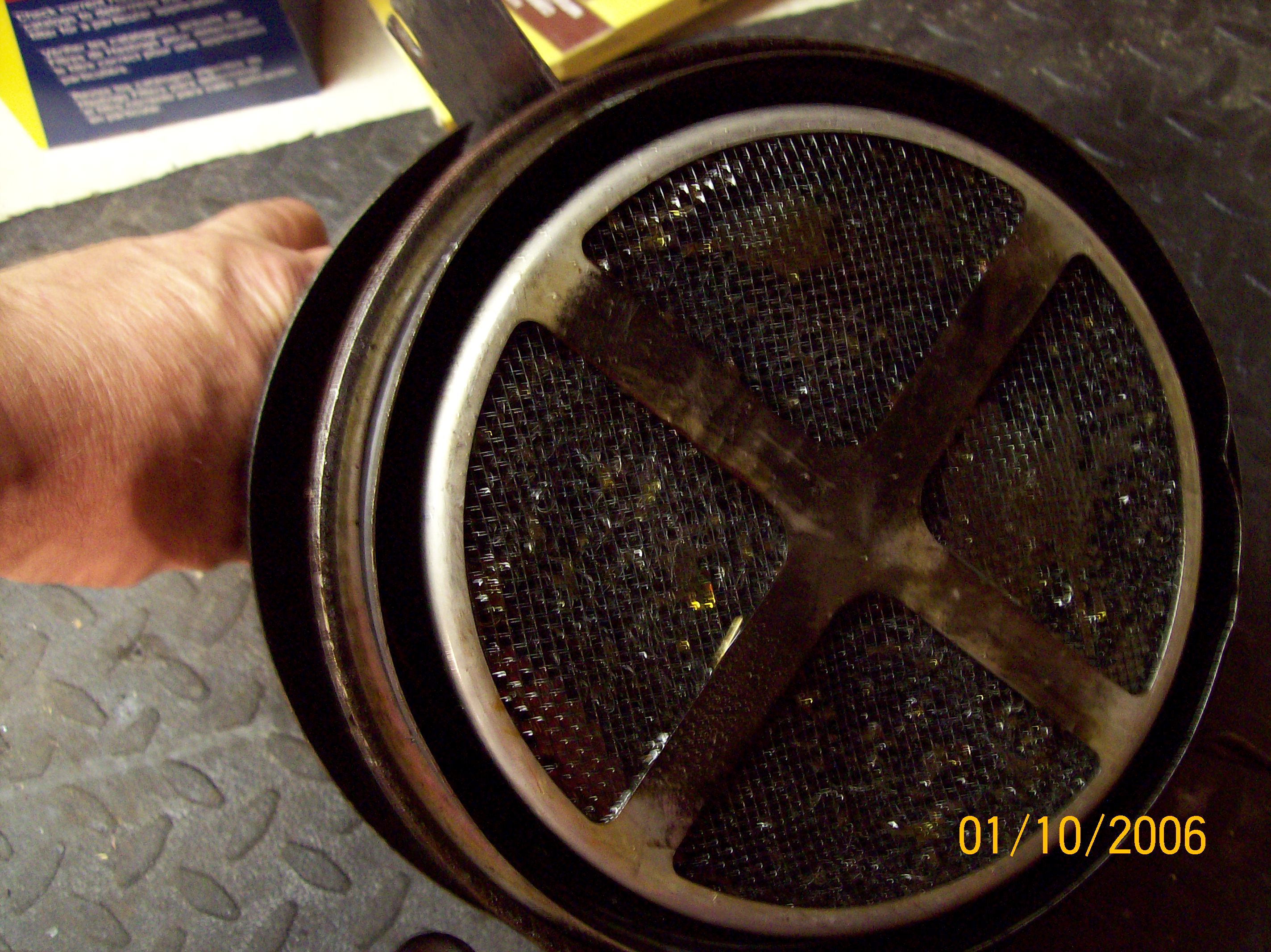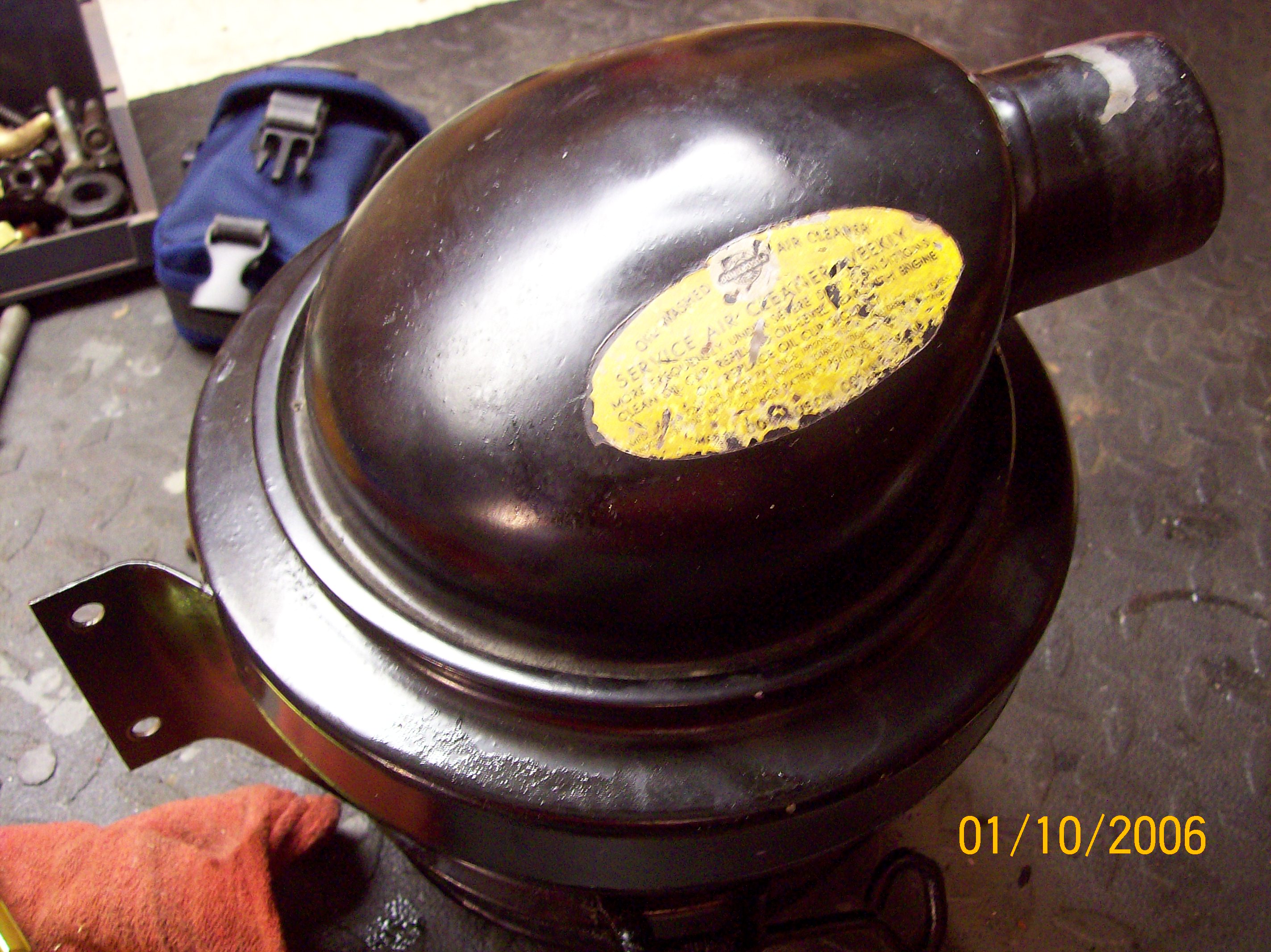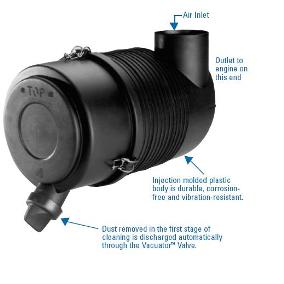Home | Site
Map | Contact Information
Willys
Air Cleaners
How they work and upgrades
By Todd Gabrielson
In order to understand air cleaners, we have to understand dust.
That’s a big topic, so here’s an abbreviated course.
Dust size is measured in micrometers (usually shortened to microns),
and the actual shape and weight of the dust particle is dependent upon
on the type of dust it is. Chaff, road dust, snow, all have unique
characteristics that affect their behavior in the air stream and their
effect on engines and air cleaners. A micron is one millionth of a
meter. So for comparison, the diameter of a human hair varies from
about 40 microns to 120 microns. Copier paper is about 100 microns
thick. Humans lose the ability to see dust particles at about 40
microns. It’s important to filter the small dust particles even
if you can’t see them.
Dust has weight, mass, hardness and shape. Air cleaners, no matter what
type, exploit these characteristics to capture dust. In a diesel
engine, machine tolerances are much tighter than they are in a gas
engine; new gas engines are tighter than older units originally
supplied with the vintage Willys, which makes them more tolerant to
dust than a newer engine. Dust larger than 15-20 microns, depending on
its characteristics, is generally not so much of a problem either, as
it is typically too large to be airborne long enough to get to your
engine. Therefore, the dust that is most important to catch is the 3-15
micron dust, as this dust will stay airborne and can also damage your
engine.
Most heavy duty air cleaner systems consist of more than one
component; this is true of the Willys air cleaners as well. The picture
below is the Donaldson FAE07 air cleaner; this model was used on most
Willys Jeeps at one time or another. Oakes air cleaners were also
utilized, as was a Fram air cleaner that had a depth loading dry type
media, however, these were eventually replaced by Donaldson.
The critical parts of the air cleaner are described in this section:
The inlet section, the pre-cleaner section, the oil cup, mesh assembly
and outlet. Dust has weight, therefore when it is moving it has
inertia. The inlet section of the air cleaner does two things, sending
air in the direction we want it to go, and accelerating the air prior
to the pre-cleaner section. In this air cleaner the pre-cleaner creates
a tortuous path, a 180 degree turn that uses the inertia of the dust to
separate it from the air stream and drop it into the oil cup where it
is captured.
The above arrow shows the inlet section, which is designed to provide
the following functions:
- Add directionality to the air stream;
you’ll
notice on yours the inlet is only on one side of the air cleaner.
- Provide some level of pre-screening due to the
size
of the holes and accelerating the air stream in part to separate the
air from the heavier dust particles.
- The dome above the inlet section provides a
rain
shield function; water is quite heavy, so moving it that far from the
inlet results in a a minimal amount of water entering the air cleaner.
- The shroud on the inside of the pre cleaner
section
directs the dust laden air by turning it 90 degrees, down into the oil
cup, where it immediately turns 180 degrees to go up to the mesh
screen. This causes the heavier dust particles to separate from the air
stream and be captured by the oil.
The air stream is then directed up into the mesh assembly. This mesh is
coated with oil from the oil bath, the tortuous path (through the mesh)
is again used to separate the dust from the air stream and where the
dust is impinged on the oily mesh, the cleaned air then goes through
the outlet section to the engine inlet.
The mesh screen is an aluminized steel mesh captured in a steel frame,
in some oil bath units this screen is removable for cleaning, but in
the Willys Donaldson air cleaner it is not. Cleaning is
accomplished by following
the directions in a Donaldson
Service Bulletin.
Above is the outlet section, as you can see it has nice rounded corners
and smooth transitions from the air cleaner body, where the air was
slowed down (low velocity), to the outlet tube which has to match the
carburetor intake diameter. Smooth transitions reduce the overall
restriction in the air cleaner and allow for longer service life.
So here is an important tip: The air is now nice and clean and the most
important thing you can do from here on is make sure it stays that way.
The hose connections, rubber sleeve and boot at the carburetor need to
be in great condition in order to seal around the inlet/outlet tubing
and keep dust out. The level of vacuum pressure inside the ducting will
increase as the diameter decreases, at any given air flow, consequently
if you have a weak spot in the seals or clamps, a dust leak may occur
and it will go right into the engine.
In addition to making sure the seals and clamps are tight, it’s
important to service the air cleaner regularly. (See the link above for
the Donaldson service bulletin for these air cleaners) Most of
us, however, are restoring vehicles that have been ignored for some
time. It would be prudent to take the air cleaner off of the vehicle,
remove the oil cup and clean it completely, check for holes and leaks
as water often sits in these and will corrode them. JB weld is a good
way to repair the oil cup.
Service Suggestions
After removing the oil cup, submerge the rest of the air cleaner in a
bath of cleaning fluid, such as Stoddard Solvent or Kerosene. I would
use a low volatility bath, don’t use gas, please; I like you guys
too much. Let it rest for a while to loosen the built up grime and
junk. The mesh screen does not come out of these cleaners, so
don’t try - it will ruin the air cleaner.
Most of us are lucky to drive more than 1000 miles a year in our jeeps,
and unless these miles are all off-road, you shouldn’t need to
change the oil in the cup more than once per year. It’s pretty
easy to remove the cup, check the bath and then decide if you need to
change it or not. Check it a couple times a season; make a good
decision based on how you use your jeep.
These oil bath air cleaners are 98-99% efficient on dust larger than 5
microns, which is an acceptable level given the tolerances in a L134
engine. Newer tighter tolerance engines required higher levels of
efficiency, that’s why the dry type air cleaner was developed.
Upgrades
Some of us are looking for system upgrades to the oil bath air cleaner.
Donaldson makes a dry paper type air cleaner that is a great substitute
for the original, the FPG05. This is a very flexible air cleaner,
as it can be mounted horizontally or vertically, has the same outlet
diameter as the original so it will be a direct connection. The
FPG air cleaner is a two stage air cleaner with an inertial separator,
again taking advantage of the mass and velocity of the air stream, and
it also utilizes a high efficiency paper media as the final
stage. In addition to the air cleaner a host of accessories, such
as rain caps, ducting, and elbows are available to upgrade that fine
old Willys. Click here for the Donaldson webpage.
Credits to:
Donaldson Company Inc for technical information
Sarah Swenson
Randy Thompson
Tom Miller
Friends and associates
The CJ-3A Story | CJ-3A
Photos | CJ-3A Specs and Tech Tips | CJ-3A Literature | Siblings of the CJ-3A | Accessories | Links
10/11
www.CJ3A.info © 2011





